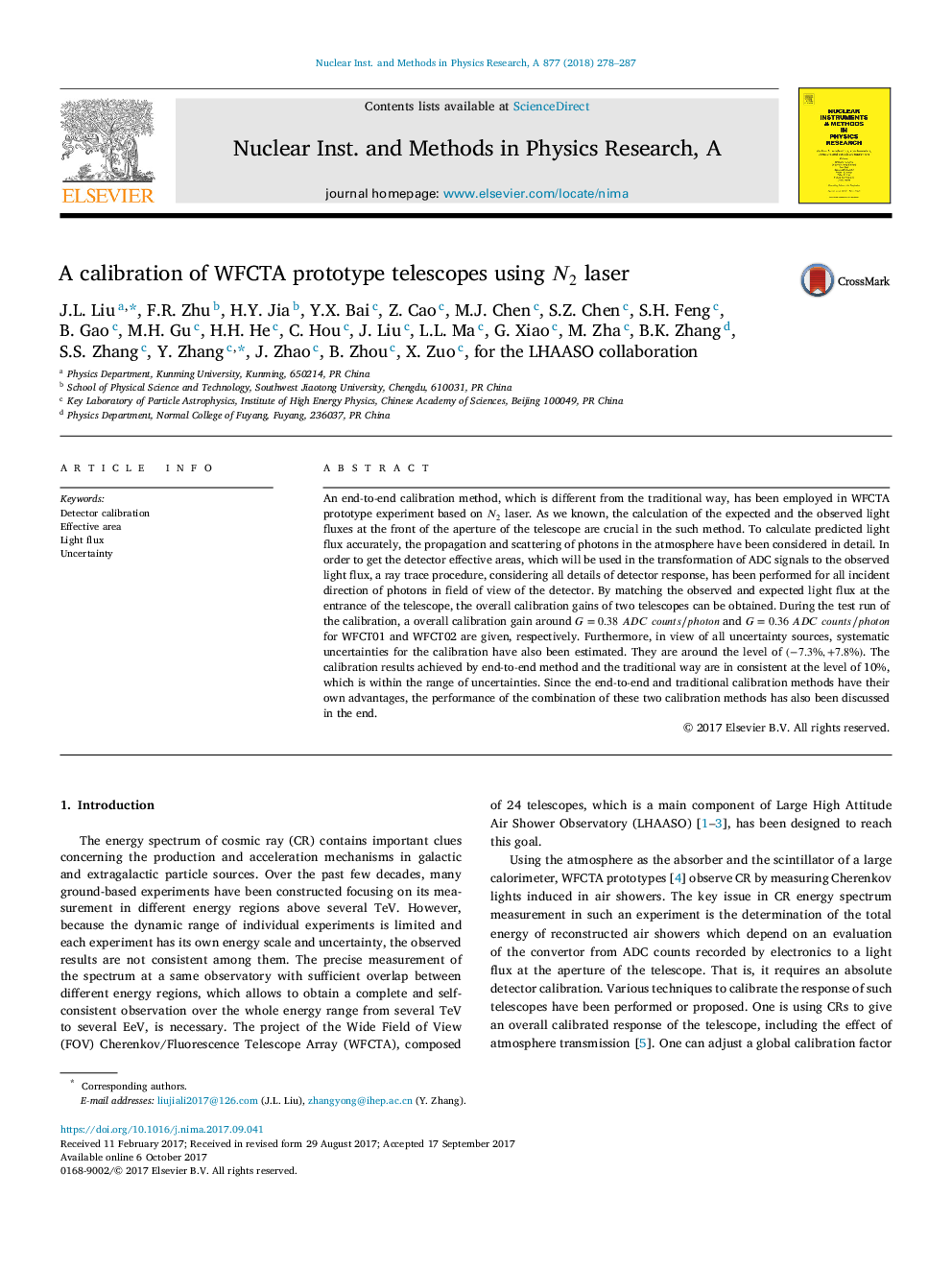| Article ID | Journal | Published Year | Pages | File Type |
|---|---|---|---|---|
| 5492526 | Nuclear Instruments and Methods in Physics Research Section A: Accelerators, Spectrometers, Detectors and Associated Equipment | 2018 | 10 Pages |
Abstract
An end-to-end calibration method, which is different from the traditional way, has been employed in WFCTA prototype experiment based on N2 laser. As we known, the calculation of the expected and the observed light fluxes at the front of the aperture of the telescope are crucial in the such method. To calculate predicted light flux accurately, the propagation and scattering of photons in the atmosphere have been considered in detail. In order to get the detector effective areas, which will be used in the transformation of ADC signals to the observed light flux, a ray trace procedure, considering all details of detector response, has been performed for all incident direction of photons in field of view of the detector. By matching the observed and expected light flux at the entrance of the telescope, the overall calibration gains of two telescopes can be obtained. During the test run of the calibration, a overall calibration gain around G=0.38ADCcountsâphoton and G=0.36ADCcountsâphoton for WFCT01 and WFCT02 are given, respectively. Furthermore, in view of all uncertainty sources, systematic uncertainties for the calibration have also been estimated. They are around the level of (â7.3%,+7.8%). The calibration results achieved by end-to-end method and the traditional way are in consistent at the level of 10%, which is within the range of uncertainties. Since the end-to-end and traditional calibration methods have their own advantages, the performance of the combination of these two calibration methods has also been discussed in the end.
Related Topics
Physical Sciences and Engineering
Physics and Astronomy
Instrumentation
Authors
J.L. Liu, F.R. Zhu, H.Y. Jia, Y.X. Bai, Z. Cao, M.J. Chen, S.Z. Chen, S.H. Feng, B. Gao, M.H. Gu, H.H. He, C. Hou, J. Liu, L.L. Ma, G. Xiao, M. Zha, B.K. Zhang, S.S. Zhang, X. Zuo,
